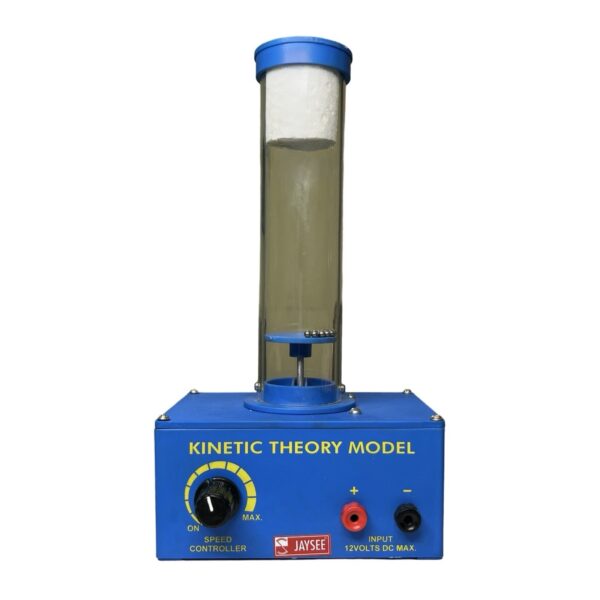- Pick up from the Samtech Store in Ambala
To pick up today
Free
- Courier delivery
Our courier will deliver to the specified address
4-5 Days
200+






₹1,000 Original price was: ₹1,000.₹550Current price is: ₹550. (Exc. GST)
To pick up today
Free
Our courier will deliver to the specified address
4-5 Days
200+
The Kinetic Theory of Matter explains the behaviour of matter in terms of the motion of its particles. It helps us understand how solids, liquids, and gases behave based on the energy and movement of their molecules. The Kinetic Theory Model is an excellent demonstration within the realm of STEM education.
Matter is made of tiny particles: Matter (solids, liquids, and gases) is made up of very small particles such as atoms or molecules. These particles are in constant motion, and their behaviour depends on the state of matter.
Particles are in constant motion:
Collisions: Particles collide with each other and the walls of their container. These collisions are elastic, meaning no energy is lost, but it can be transferred between particles.
Energy and temperature: The temperature of a substance is related to the average kinetic energy of its particles. The higher the temperature, the faster the particles move, and the more energy they have. In gases, temperature and pressure are closely related through this theory.
Pressure in gases: In gases, the particles are moving so quickly that they frequently collide with the walls of the container. The force of these collisions is what causes pressure. Higher temperatures or more particles increase the pressure of a gas because they lead to more frequent and forceful collisions.
The Samtech Kinetic Theory Model is an excellent STEM (Science, Technology, Engineering, and Mathematics) learning kit designed to provide students with an engaging and interactive hands-on learning experience. This innovative educational tool allows students to explore fundamental concepts of physics and kinetic theory through practical experiments and activities, fostering a deeper understanding of scientific principles.
In stock
In stock
In stock
In stock
In stock
No account yet?
Create an Account
SAMTECH INSTRUMENTS
Typically replies within minutes
Any questions related to Kinetic Theory Model?
🟢 Online | Privacy policy
WhatsApp us

